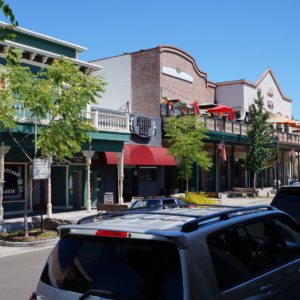Why is California City So Cheap? 4 Main Reason in 2024
Why is California City so cheap? Everything in California is usually expensive. Yet, here we are, gazing at a desert landmass with the scale to rival Los Angeles, but with the price tags of ghost towns.

What are the forces that are truly stopping this sprawling desert haven from matching the real estate frenzy of other Californian cities? Strap in, we’re about to journey through time, economic fluctuations, and geographical peculiarities—armed with data, of course—to decipher why California City remains a financial anomaly.
Table of Contents
Methodology
Before we get all Alice-in-Wonderland down this rabbit hole, let’s talk methodology. We didn’t just stroll into this question empty-handed, like explorers fumbling through a forest without a map. No, we dug deep into census data, historical records, and real estate reports. We cross-referenced local economic indicators and threw in some good old-fashioned boots-on-the-ground insights from residents.
Not to mention, we scoured through academic studies on urban development (or lack thereof) in remote areas. Why trust us? Well, our research is as transparent as the dry desert air that encircles California City. We rely on data, logic, and a hearty dose of skepticism to unpack the baffling cheapness.
Here are some of our sources that we used:
– U.S. Census Bureau – Population Density Data.
– California Department of Transportation (Caltrans) – Highway Access and Property Values.
– Bureau of Labor Statistics – Unemployment Rates.
– Kern County Economic Development Corporation (Kern EDC) – Economic Growth Report.
– Zillow – Median Home Prices.
– National Association of Realtors (NAR) – Real Estate Market Dynamics.
– Yelp – Restaurant Listings.
– California Department of Education (CDE) – School Performance Data.
Reason #1: A Failed Utopia – The Original Grand Plans Fell Flat
Back in the 1950s, real estate developer Nat Mendelsohn had a grand vision for California City: he wanted it to be the next Los Angeles, a sprawling metropolis teeming with people, commerce, and opportunity. The problem? His dream city was a tad too ambitious, and reality quickly doused those flames.
Data speaks louder than dreams. According to census records, California City currently has a population of just 14,000, spread thin across its 203.6 square miles.
That’s roughly 68 people per square mile, while nearby cities like Los Angeles boast numbers closer to 8,400 people per square mile. It’s a ghost town in comparison, yet the infrastructure—road grids, utilities, and zoning plans—was laid out for a population of one million. With so few people occupying such a vast area, it’s like an orchestra prepared for a symphony, but no one showed up to play.
Add to that the absence of key industries, and you’ve got a recipe for affordable real estate. The dream of bustling, high-paying jobs never came to fruition, which leads to our second reason…
Reason #2: Economic Isolation – No Jobs, No Boom
One of the major reasons why California City is so cheap is its isolation from significant economic hubs. Picture this: you’re sitting in the desert, with nothing but sagebrush and tumbleweeds for miles, and the nearest large-scale employer is Edwards Air Force Base, located about 20 miles away. The base provides some jobs, sure, but not enough to support a large, thriving city.
The employment rate here has historically lagged behind state averages. Recently, California City’s unemployment rate hovered around 11.2%, compared to California’s overall 7.6%. When jobs are scarce, there’s no motivation for people to move in, and when people don’t move in, demand for housing stays low.
Combine this with the fact that remote work hasn’t exactly boomed here like it has in other rural communities, and you’ve got a stagnant economy. No major companies are headquartered here, and the tech boom that revitalized cities like San Francisco bypassed California City altogether.
Reason #3: Location, Location…But Not the Good Kind
Yes, we know: location is king in real estate, right? But for California City, location is more of a jester. It sits roughly 100 miles northeast of Los Angeles, far enough to make commuting impractical, but not far enough to be considered a unique destination. It’s in a kind of geographical limbo, sandwiched between the Mojave Desert and, well, more desert.
And here’s where things get even more interesting. According to data from Realtor.com, the median home price in California City hovers around $180,000, compared to the $720,000 average for the state of California.
That’s over a 75% difference. But what makes it even more peculiar is that California City’s neighbors—Lancaster and Palmdale—aren’t exactly bustling metropolises either, yet their home prices are significantly higher, averaging around $350,000.
Why the discrepancy? One word: distance. Lancaster and Palmdale are closer to major highways, airports, and—crucially—Los Angeles. California City, on the other hand, is tucked away in a less accessible part of the desert. Its remote location makes it difficult to draw in new residents, and when there’s little influx of people, home prices stagnate.
Reason #4: Water Woes – The Invisible Limitation
No one talks about water when they ponder why California City is so cheap, but maybe they should. The desert is dry—surprise, surprise—and water rights in this part of California are notoriously tangled.
While California City has access to a water district, the cost of infrastructure and ongoing maintenance has proven to be a challenge. Studies by the Kern County Water Agency show that maintaining and expanding water access in this region is increasingly costly due to drought conditions and the need for extensive pipelines.
Data from the U.S. Geological Survey notes that the area’s groundwater levels have been steadily declining, which puts a cap on potential growth. You can’t build a thriving metropolis if there’s no water to sustain it.
Moreover, the California Department of Water Resources estimated in 2021 that, over the next decade, this region would face 15-20% reductions in water deliveries, meaning that expansion and development are difficult without substantial investments in water-saving technologies. So, even though the land is cheap, the resources to sustain large populations are not, keeping housing prices low.
Why is California City So Cheap? Summary
So why is California City so cheap? It’s the perfect storm of overly ambitious city planning, economic stagnation, geographical isolation, and water scarcity. These factors, when combined, create an environment where supply far outweighs demand. The dream of a bustling metropolis never materialized, and the desert, indifferent to human ambition, continues to reclaim its space.
This has left California City in a state of limbo—too big for its population, too remote for rapid growth, and too parched for widespread development.
But, is cheap always a bad thing? Not necessarily. For those looking for an affordable slice of California, away from the frenzied pace of coastal cities, California City offers a rare opportunity. It may not have the glittering skyline of LA or the tech jobs of San Francisco, but it does have something neither of those cities can claim: space. Lots and lots of space.
If you’re seeking wide-open landscapes and dirt-cheap housing, this might just be your desert utopia. Just don’t expect the crowds to rush in anytime soon.
Frequently Asked Questions
1. Can California City ever become expensive?
Anything is possible, but given the existing economic and environmental conditions, it’s unlikely. If industries or new infrastructure developments suddenly take off, that could drive prices higher. But for now, the city’s isolation and water scarcity make it an unlikely candidate for rapid growth.
2. Is it safe to invest in real estate in California City?
That depends on your risk tolerance. Property values are stable but low, and the potential for significant appreciation is minimal without drastic changes in the area’s economy or infrastructure.
3. Are there plans to bring more jobs or industries to the city?
There have been occasional proposals, but nothing concrete has come to fruition on a large scale. The proximity to Edwards Air Force Base provides some job stability, but it’s not enough to drive population growth.
4. What’s the appeal of living in California City?
Affordability and space. If you’re looking for cheap housing in California, with room to breathe and not much hustle and bustle, it might be the place for you.





